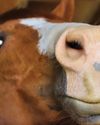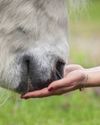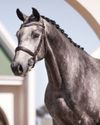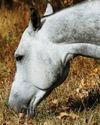Denemek ALTIN - Özgür
Flat Feet
HQ magazine
|July 2017
What’s happening in the horse’s hoof?
-

Flat-footedness is a common problem that several horse owners and farriers face, and it is especially prominent in Thoroughbreds. Flat feet develop as a result of genetics, conformation faults, poor physical conditions, lack of hoof care or early shoeing, as is the case for most Thoroughbreds. Long toes and underrun heels go hand-in-hand with flat feet. Most horses can recover from flat-footedness with corrective farriery, improved diet and physical rehabilitation.
What’s going on inside?
A foal is born with his coffin bone high up in the hoof capsule, and the connection between the epidermal and dermal laminae is tight. This connection is what holds the internal structures of the hoof exactly where they need to be. The position of these structures – high in the hoof capsule – creates a concave shape on the sole. The concavity represents a well-connected hoof and correct anatomy. The coffin bone itself is not flat, but has a slight curve to it, and the external structure follows this shape. This tight connection remains strong and intact as the horse grows, unless influenced by external factors such as the ones humans introduce: poor hoof care, premature or unnecessary shoeing, restricted movement and rich diets all contribute to the declining health of the hoof.
Bu hikaye HQ magazine dergisinin July 2017 baskısından alınmıştır.
Binlerce özenle seçilmiş premium hikayeye ve 9.000'den fazla dergi ve gazeteye erişmek için Magzter GOLD'a abone olun.
Zaten abone misiniz? Oturum aç
HQ magazine'den DAHA FAZLA HİKAYE

HQ magazine
The Science Behind Tapering
The science behind tapering
5 mins
Issue 155

HQ magazine
Horse Treats
The ultimate guide
5 mins
Issue 155

HQ magazine
Horsey Hair Care
Tips and tricks for a healthy mane and tail
5 mins
Issue 155

HQ magazine
Horsey Hydration- The Importance Of Water In Winter
The importance of water in winter
4 mins
Issue 155

HQ magazine
A Horseback Safari
Abelana Game Reserve
6 mins
Issue 155

HQ magazine
The Psychology Of Riding Performance
Intrinsic motivation, part 7
7 mins
Issue 155

HQ magazine
10 Best Life Lessons From Horses
Life lessons from our horses
4 mins
Issue 155

HQ magazine
Breaking New Ground
The evolution of the Callaho Online Auction
5 mins
Issue 155

HQ magazine
Horse Psychology 101
Part 3: The horse's cognitive abilities
9 mins
Issue 155

HQ magazine
Colic Part 1
An owner’s worst nightmare
7 mins
Issue 155
Translate
Change font size
